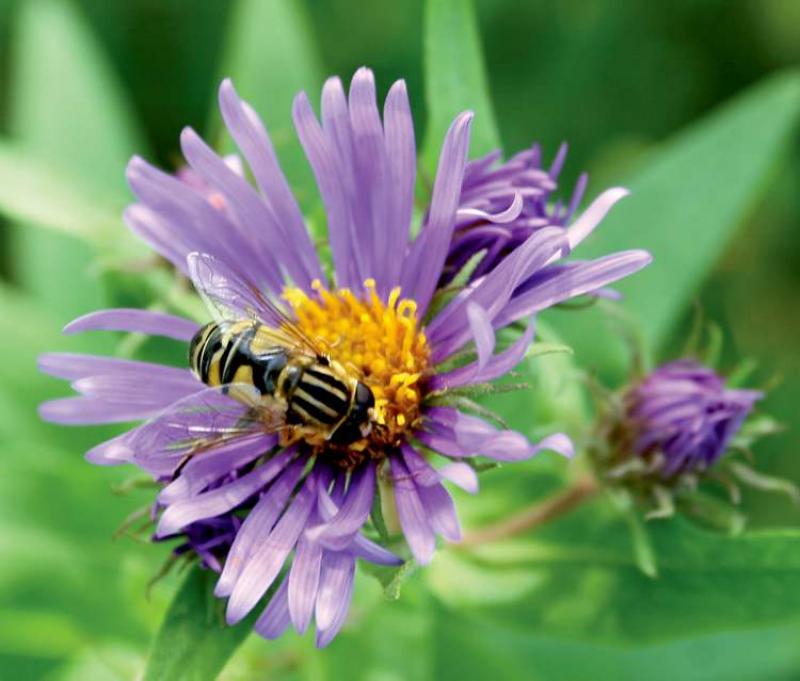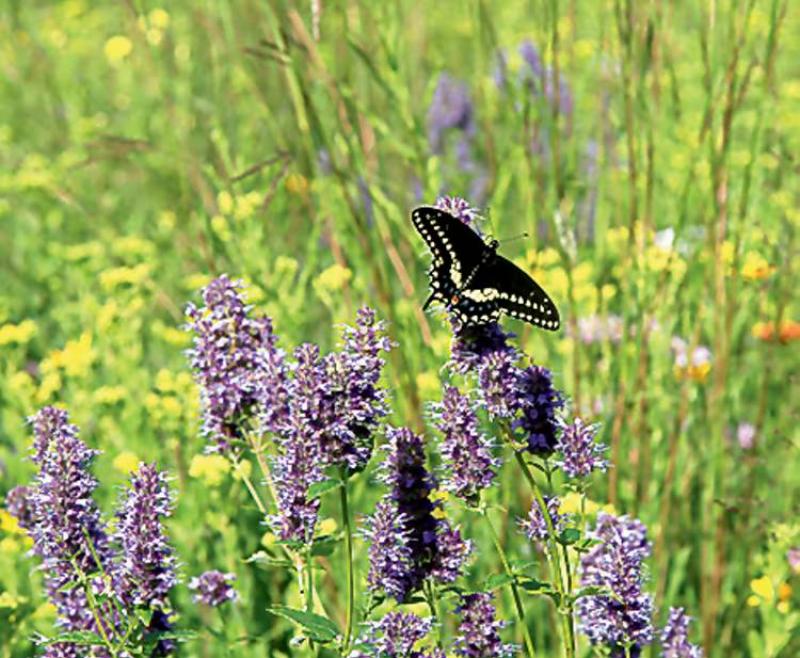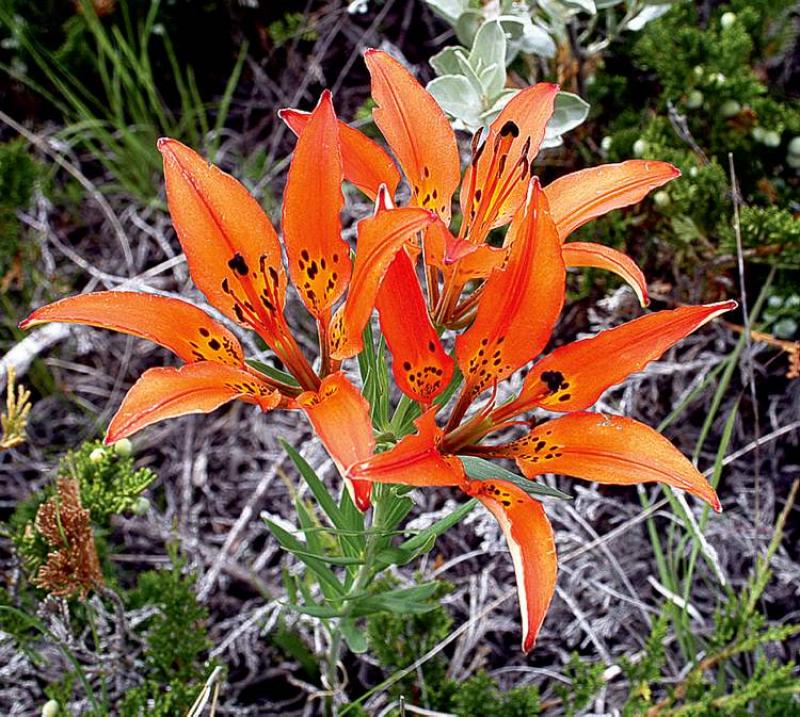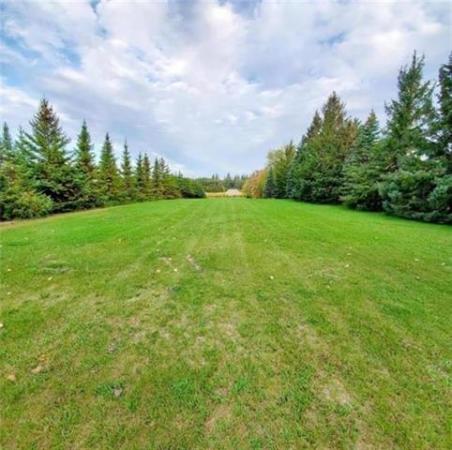


Walk through almost any neighbourhood now in Manitoba and you will see yards that stand out from the others. It might be a delightful small garden tucked into an inner city lot that is surrounded by butterflies and bees. Or a larger suburban yard or community park planted with grasses that are reminiscent of the once vast prairie grasslands. Apartment balconies, too, can be seen with ever-changing blooms spilling over in combination with short and tall grasses swaying in the breezes. Even public areas, such as boulevards, have been spotted with an eye-catching swatch of plantings featuring sunshine gold, deep purple, sky blue and icy white-coloured wildflowers combined with graceful tall prairie grasses.
The one thing these distinctive areas have in common is they are all home to native prairie plants. The last 20 years have seen a revival of interest here in Manitoba and across Canada in native prairie plants, including woodland wildflowers and grasses. This renewed interest has succeeded in bringing many of these plants back from nearly the brink of extinction in the wild and into peoples' lives and landscapes once again.
Didn't earlier generations spend their lives getting rid of native species to accommodate crops, lawns and houses? Why then, the resurgence of interest in planting native species? The answer is that native species have the advantages of thousands of years of adaptation to our Manitoba conditions. We all know the weather here can be as tough on plants as it is on people. By a process known as natural selection, native species have evolved over thousands of years to cope with pretty well anything nature can throw at them, from drought to floods to temperature extremes.
Most of the crop, lawn and garden species we grow today on the Prairies come from Europe and the Middle East. They often have few natural defenses against Canada's extreme climate. Many require costly inputs of fertilizer, pesticides and labour in order to survive. Native species, on the other hand, usually thrive on their own once they are established and are ideally suited to lower maintenance landscaping.
There is an undeniable excitement in growing plants that give us a sense of both our cultural and natural history. These plants were here when woolly mammoths and sabre-toothed cats roamed Manitoba. They waved in the wind and sunshine of 10,000 summers and nourished immense bison herds that covered the ground to every horizon. These plants provided food and medicines for more than 350 generations of aboriginals. Plants such as sweet grass, sage and cedar also figured prominently in First Nations' spiritual and cultural beliefs, and still do today. Early settlers depended upon native species such as prairie turnip for food through many a long, hard winter. Growing native plants today in our own yards not only helps us establish roots in the soil, but also roots with our past.
Another benefit of native plants is their attractiveness to wildlife. Butterflies, pollinating and predatory insects and songbirds seek out even the smallest native prairie garden.
You can grow a hummingbird haven, butterfly oasis or songbird meadow, even in the heart of the concrete jungle. Native prairie species have evolved to attract insect and bird species as an important part of their life cycle. If you grow it, they will come!
Soil-building is another important feature of deep-rooted native plants. They naturally add immense amounts of organic matter and nutrients to the soil every year without the need for expensive or damaging fertilizers. Since they are drought-tolerant, annual precipitation is generally enough to meet their water needs. Most are long-lived perennials, which makes them far cheaper in the long run than buying and planting annuals every spring or replacing them with non-native perennials that cannot cope with our harsh growing conditions.
Many native species are rare or even critically endangered in the wild. Habitat loss has reduced southern Manitoba's lush tall grass prairies to less than one per cent of what they once were. Planting native wildflowers and grasses grown from seed helps to make these species less endangered. It may not seem like much, but providing a space in your yard for them to continue to grow and prosper is an important contribution to conservation. We often hear only bad news when it comes to environmental topics. This, though, is a very good news story -- one that every gardener can participate in and feel good about.
The most common question I get asked is, "Won't these native species take over my yard?" The problem is not with native species, but rather with non-native weeds such as dandelion, quack grass, thistle (even Canada Thistle), leafy spurge, purple loosestrife, wild oats, wild mustard, etc. These are European imports, brought here with settlement and over time, without any natural controls, have gradually become invasive. Since they did not evolve here, the checks and balances that exist for native species are lacking. Few native wildflowers or grasses ever cause weed problems. They have the natural predators and controls nature has put into place over thousands of years.
The most important reason to love native species is their simple beauty. They provide an ever-changing tapestry and a natural show of unequalled beauty through every season. Consider, for example, the furry mauve prairie crocus poking through April snow banks, or a spring wave of golden sweet grass, pink three-flowered Avens, multi-coloured ground plum, violets, and cute pussy toes. In early summer, enjoy a splash of icy white Canada anemone, or petite June grass followed by the radiant mid-summer blooms of blazing stars, Culvers root, and bergamot. In the fall, tall grasses such as big bluestem, Indian grass and prairie dropseed provide graceful displays of red, bronze and gold. For late fall blooms, try asters or gentian.
WANT to know more? Some of my favourite resources include Naturescape Manitoba, Gardening with Prairie Plants, Restoring Canada's Native Prairies and Noah's Garden. For further information, visit these websites:
www.prairieflora.com
www.prairieoriginals.com
www.naturenorth.com
www.wildaboutgardening.org
www.wildones.org
Conservation
SOMETIMES a native prairie plant can be found growing in a garden without the gardener having any idea as to its origin or significance. It may have been purchased and planted simply because of its enticing blooms or interesting foliage. Its enduring hardiness, though, in comparison to other plants that fail to reappear in the spring after a long, harsh winter secures its status as a favoured plant. Consider, though, its value as a native plant that has endured for thousands of years and its status becomes that of a treasured species.
Manitoba is home to many diverse native plant species. More than 900 species of distinct prairie flora and fauna can be found in the Manitoba Tall Grass Prairie Preserve, located near Gardenton and Vita, south of Steinbach. Today's contributor, John P. Morgan, an ecologist and owner of Prairie Habitats near Argyle, is dedicated to conserving Prairie ecosystems. Morgan initiated the first systematic inventory of native prairies in Canada and as chairman of the 23rd North American Prairie Conference, is busy preparing to welcome visiting experts and native plant enthusiasts Aug. 6-10 at the University of Manitoba Fort Garry Campus, site of the first-ever NAPC in Western Canada.
In addition to guest speakers, there will also be guided field trips to some of Manitoba's best original native and restored prairies. Living Prairie Museum on Ness Avenue, home to a great selection of wildflowers and grasses indigenous to Manitoba as well as one of the best examples of remnant tallgrass prairie, will be one of the field trip locations. "Help preserve our prairie heritage and create much-needed habitat for wildlife and insects by planting prairie plants in your yard," adds Danielle Trudel, education co-ordinator at Living Prairie Museum and member of the organizing committee. Tough-to-find seeds are also available for purchase.
The public is invited to attend. Full details of the conference can be found at www.napc2012.org. To register or for more information, phone 204-832-0167.
Colleen.Zacharias@gardensmanitoba.com




